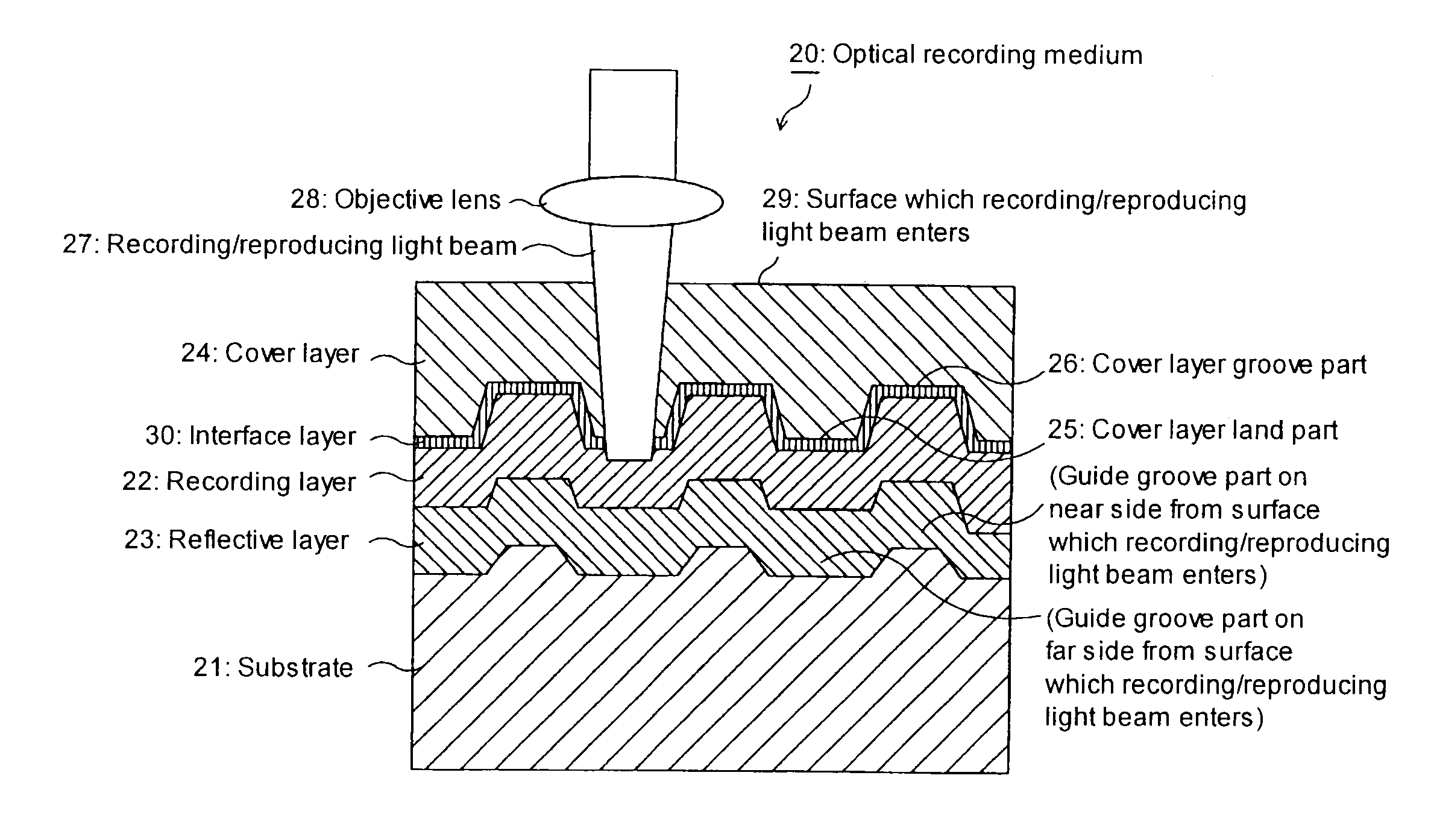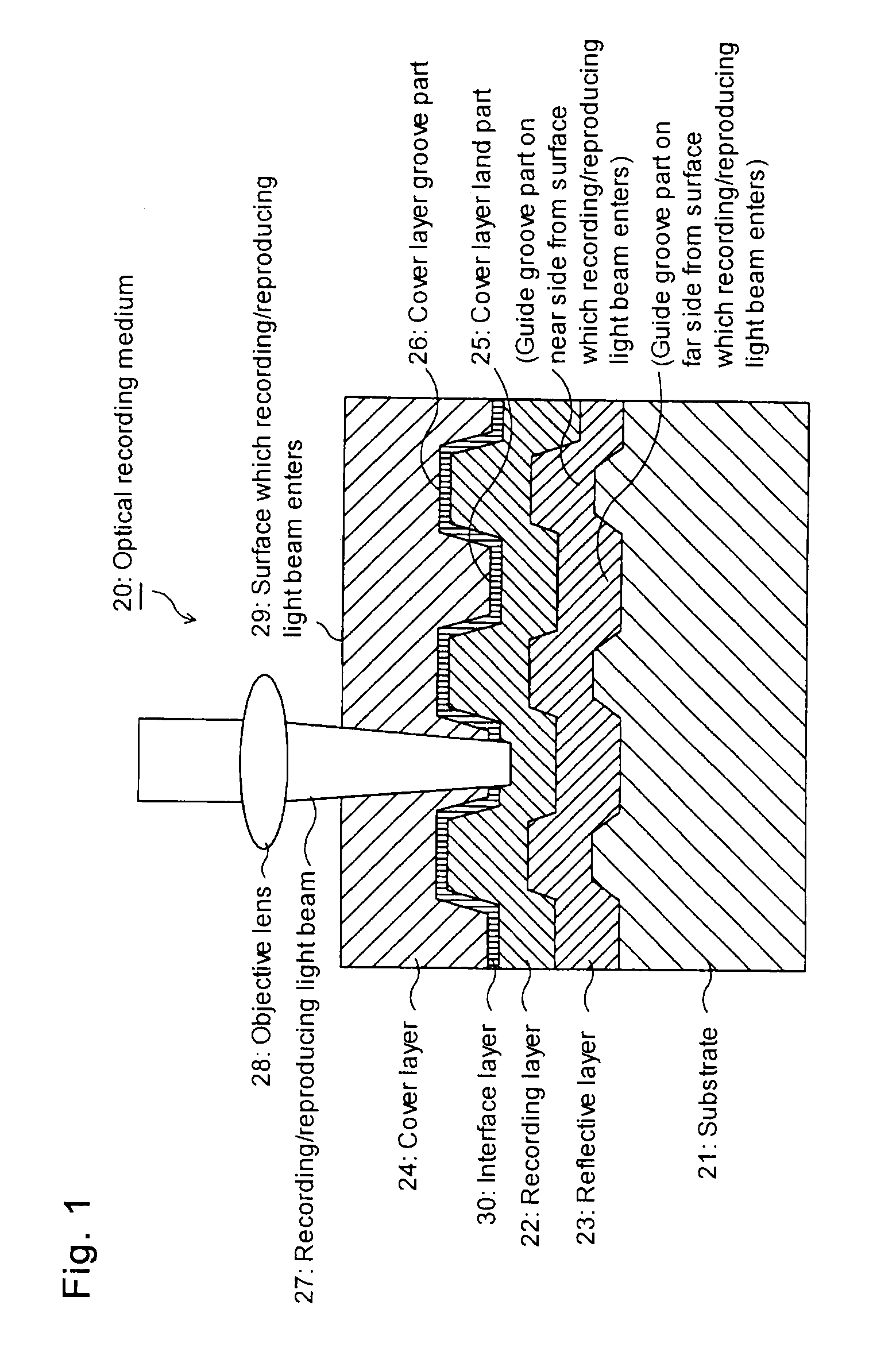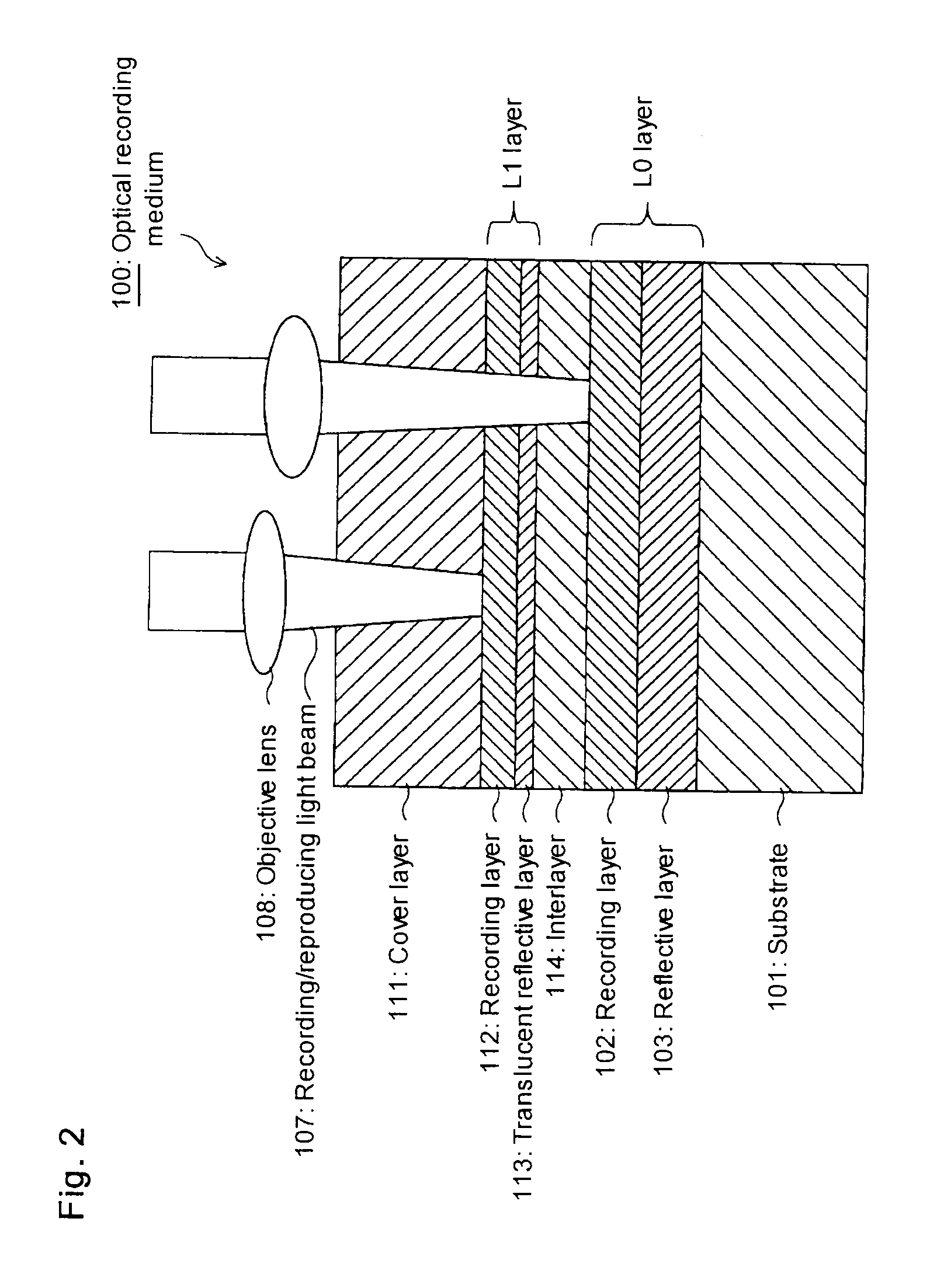Azo metal chelate dye and optical recording medium
a technology of azo metal chelate which is applied in the field of dye and optical recording medium, can solve the problems of insufficient reproduction durability and insufficient recording characteristics, and achieve the effects of high speed recording characteristics and reproduction durability, high density, and excellent high speed recording characteristics and reproduction stability
- Summary
- Abstract
- Description
- Claims
- Application Information
AI Technical Summary
Benefits of technology
Problems solved by technology
Method used
Image
Examples
example 1
(a) Preparation Example
Preparation of Coupler
12.39 g of 2H-1,4-benzothiazin-3(4H)-one (manufactured by Wako Pure Chemical Industries, Ltd.) represented by the above formula (1) was dissolved in 124 ml of acetone, and 6.31 g of potassium hydroxide and 15.97 g of methyl iodide were added, followed by stirring at from 50° C. to 60° C. for 3 hours. The reaction solution after cooled was poured into 300 ml of water and neutralized with concentrated hydrochloric acid (12N aqueous hydrochloric acid solution), and extracted with 350 ml of ethyl acetate.
The extract layer (ethyl acetate layer) was washed with water and dried over sodium sulfate overnight. The extract layer was subjected to filtration, and the solvent was distilled off by an evaporator. After distillation, 15.56 g of a compound (2) represented by the following formula (2) in the form of an orange liquid was obtained.
The obtained compound (2) was dissolved in 202 ml of chloroform, the solution was cooled to 0° C. to 5° C., 42.0...
example 2
(a) Preparation Example
0.34 g of the above-described compound (6) was dissolved in 10 ml of tetrahydrofuran by stirring, insoluble matters were removed by filtration, and to the filtrate, a solution having 0.13 g of cobalt acetate dissolved in 2 ml of methanol was dropwise added. The reaction solution was stirred for one hour and then poured into 75 ml of water to precipitate a solid, followed by filtration. A product collected by filtration was dried by heating (50° C.) in vacuum to obtain 0.19 g of a compound (8) represented by the following formula (8).
Of the compound, the maximum absorption wavelength (λmax) in chloroform was 407.5 nm, and the molar absorption coefficient was 4.1×104 L / mol cm.
(b) Evaluation of Light Resistance
A coating film was prepared in the same manner as in Example 1 except that the compound (8) was used instead of the compound (7). The maximum absorption wavelength (λmax) of the coating film was 412 nm.
Further, the light resistance test was carried out in t...
preparation example
(a) Preparation Example
2.03 g of 4-aminoantipyrine represented by the above formula (9) was dissolved in 16 ml of water and 3.1 g of concentrated hydrochloric acid (12N aqueous hydrochloric acid solution) by stirring and cooled to 0° C. to 5° C. To the solution, a sodium nitrite 0.76 g / 4 ml aqueous solution was dropwise added while the temperature in the reactor was maintained at 5° C. or below for diazotization thereby to prepare a diazo solution.
In a separate container, 2.01 g of the above compound (3) was dissolved in 36 ml of pyridine by stirring and cooled to 0° C. to 5° C. To this solution, the above diazo solution was dropwise added while the temperature in the reactor was maintained at 5° C. or below. After completion of the dropwise addition, the reaction solution was stirred at room temperature and subjected to filtration. A product collected by filtration was suspended in 100 ml of water, stirred for about 10 minutes and then subjected to filtration. Then, the same operat...
PUM
 Login to View More
Login to View More Abstract
Description
Claims
Application Information
 Login to View More
Login to View More - R&D
- Intellectual Property
- Life Sciences
- Materials
- Tech Scout
- Unparalleled Data Quality
- Higher Quality Content
- 60% Fewer Hallucinations
Browse by: Latest US Patents, China's latest patents, Technical Efficacy Thesaurus, Application Domain, Technology Topic, Popular Technical Reports.
© 2025 PatSnap. All rights reserved.Legal|Privacy policy|Modern Slavery Act Transparency Statement|Sitemap|About US| Contact US: help@patsnap.com



